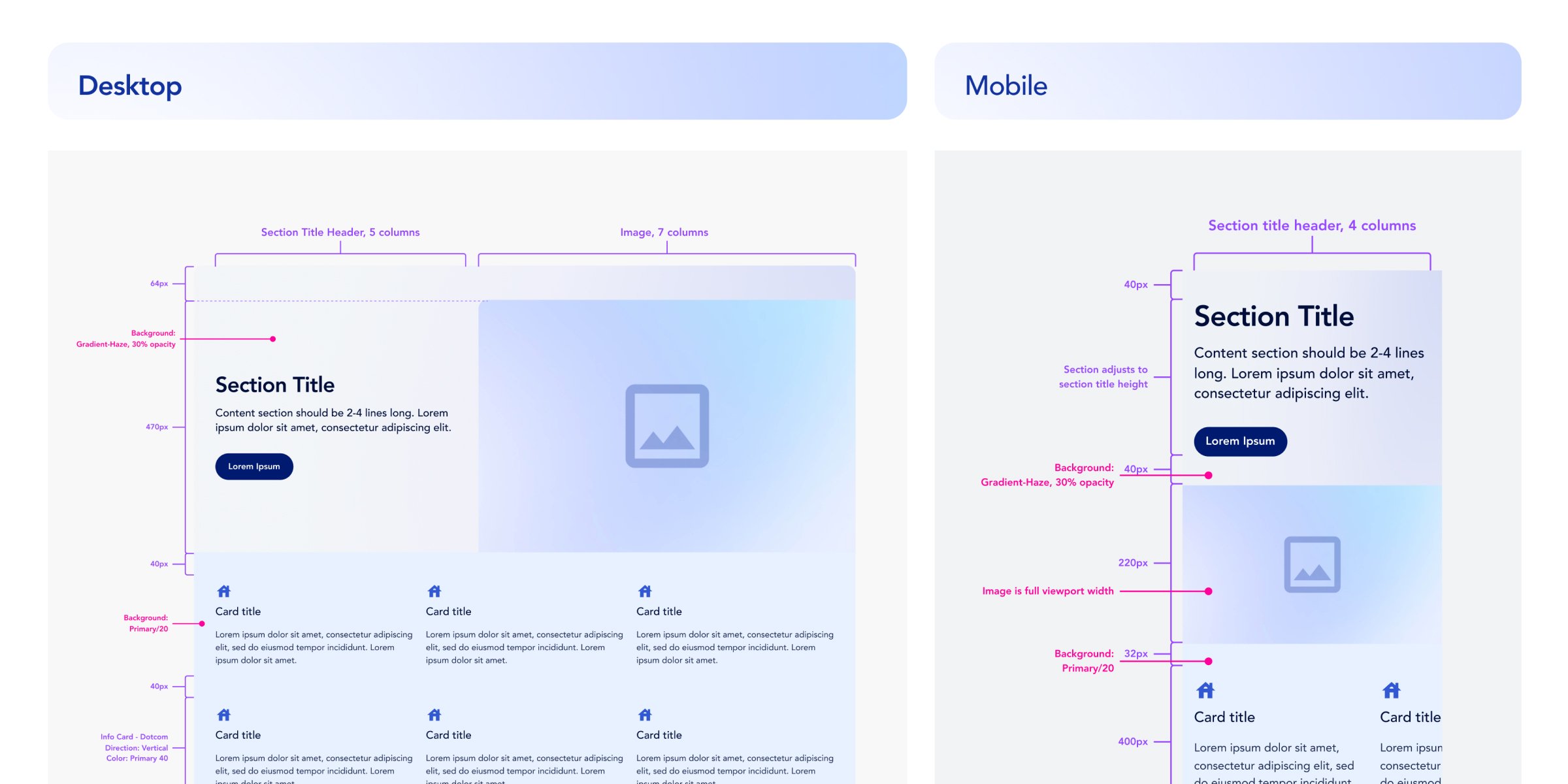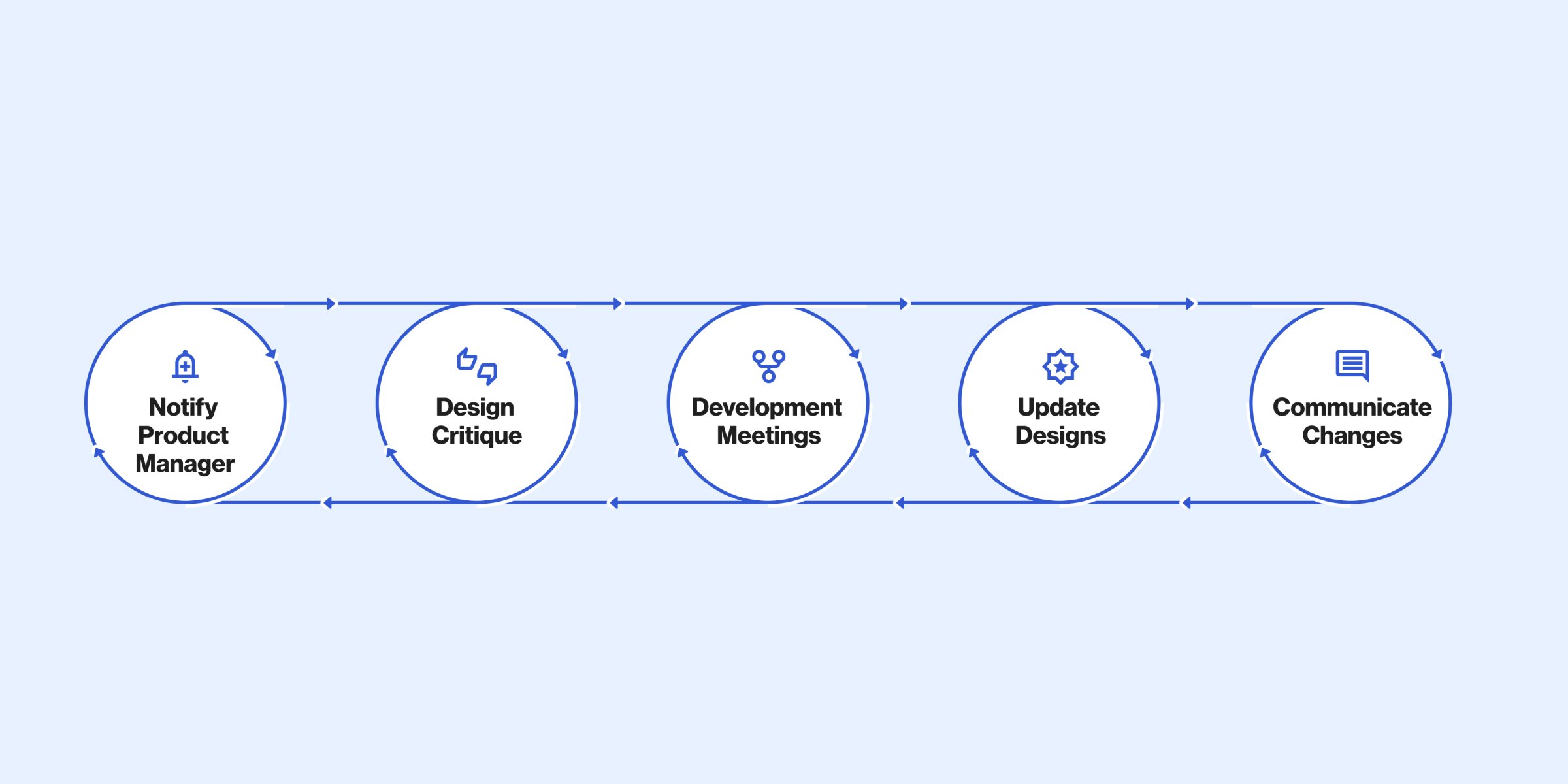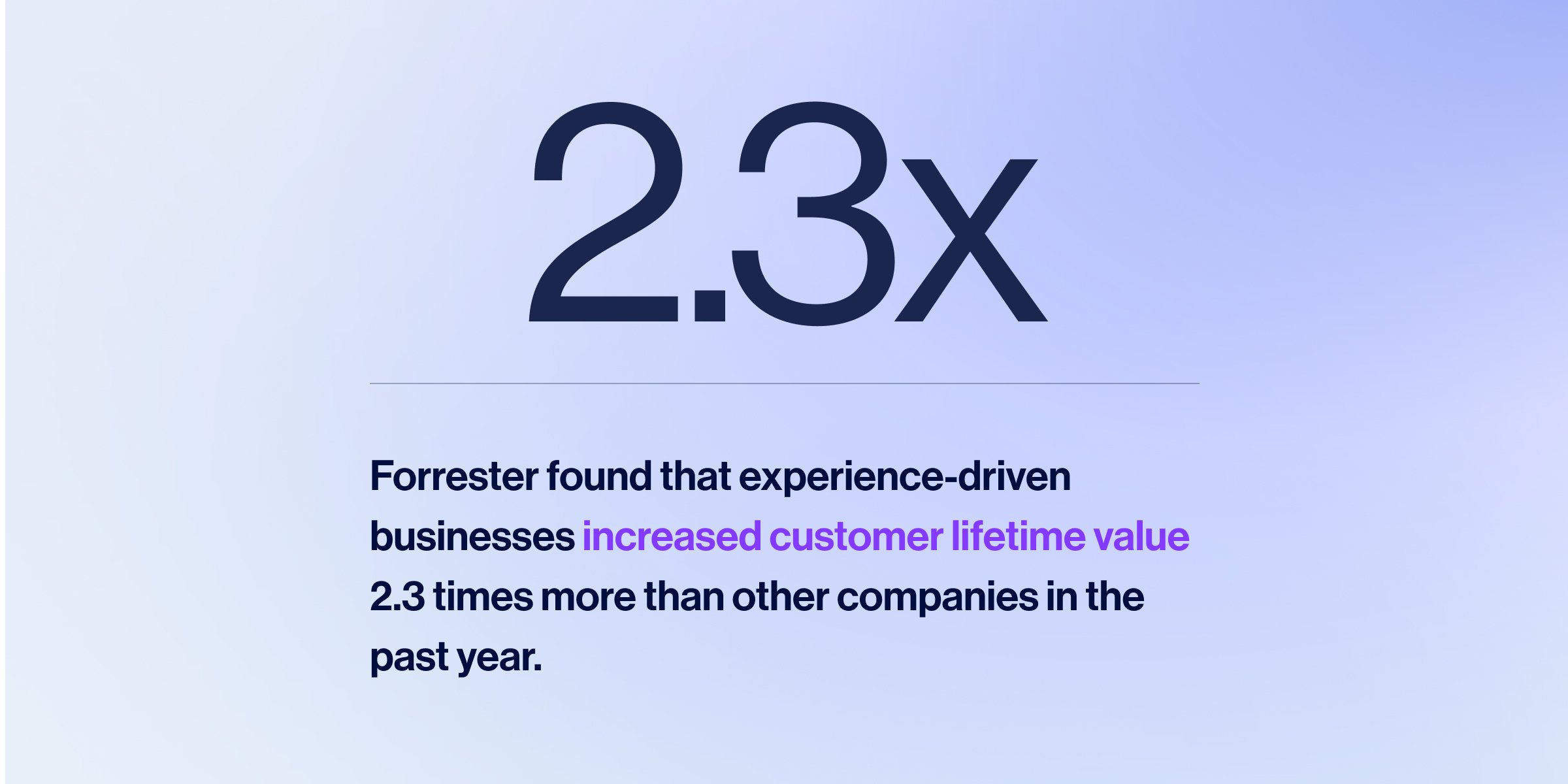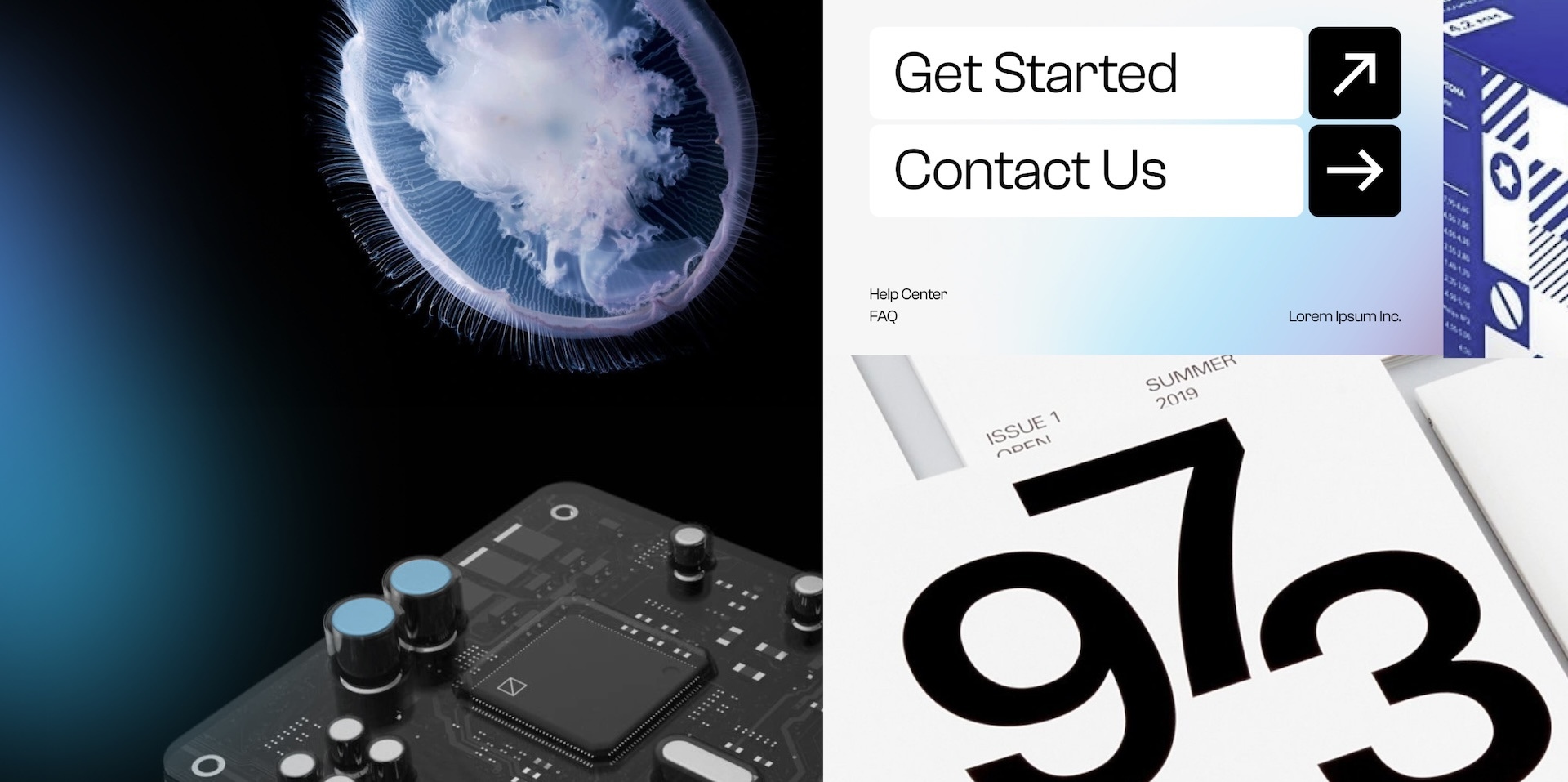
Building a robust, extensible design system now is critical with AI transformation on the horizon because it sets the foundation for scale, consistency, and adaptability in a future where design and development will increasingly be automated, accelerated, and democratized. For enterprise companies managing complex digital estates, the challenge isn’t just to build any design system—but to create one that’s ready to thrive in an AI-powered world.
Looking for a deeper dive? Download our free guide: Intelligent Infrastructure: Building the Future of Scalable Design Systems
What is a mature design system, and why does it matter?
At its heart, a design system is a collection of reusable components, guidelines, and tools that help teams create cohesive user experiences. Beyond a basic UI kit, it’s a shared language and operating principles that are agreed upon between leadership, designers, developers, and other collaborators, making product creation more accessible, streamlined, and scalable from the start.
In the context of AI, design systems take on even more importance. Consider this:
- AI thrives on structure and standardization. Without consistent design patterns and semantic metadata, AI tools can’t efficiently generate interfaces or uphold accessibility standards.
- AI democratizes design. With tools allowing non-designers to prototype and build interfaces, your design system evolves into both a guide and a safety net, enforcing usability and brand standards.
- AI accelerates development timelines. Design systems bridge human creativity with machine precision, ensuring that automation enhances rather than compromises your product’s quality.
The stakes are higher in enterprise settings
Enterprise organizations face unique challenges when it comes to design systems:
- Fragmentation. Different product teams often work in silos, with disparate tools, timelines, and goals, leading to inconsistent user experiences.
- Legacy systems. Many businesses grapple with outdated design practices, technical debt, and inconsistency across their product suite.
- Scale. With vast teams and product ecosystems, implementing a cohesive system that works across multiple teams, regions, and user bases is no small feat.
A robust and extensible design system gives enterprise teams the foundation they need to create scalable, future-focused solutions. But how do you make that happen?
10 Key Insights for Enterprise Leaders on Building, Scaling, or Evolving a Design System
Building, scaling, extending, or refactoring a design system requires a strategic approach, collaboration, and adaptability. By understanding these 10 essential aspects, teams can drive consistency, scalability, and long-term success for their design and development efforts.
1. Define the Strategic Purpose of Your Design System
- Start by identifying the specific challenges your organization is facing—such as inefficiencies, inconsistencies, or scalability issues—and determine how a design system can address these.
- Clearly articulate how the design system will align with broader business objectives, such as enhancing user experience, reducing development timelines, or improving collaboration across teams.
- Share a vision for how the system will deliver tangible benefits, such as enabling teams to work faster, maintaining a cohesive brand identity, or supporting product innovation.
2. Plan for Enterprise-Scale Growth
- Design your system with scalability in mind. Consider how components will be used across multiple teams, products, and regions, ensuring they can adapt to different contexts without losing cohesion.
- Anticipate future needs by adopting a modular approach to your design system, allowing for easy integration of new technologies, patterns, or tools as your organization expands.
- Invest in tools and frameworks that can support global markets, including localization options and regional customization capabilities.
3. Prioritize Accessibility as a Business Imperative
- Incorporate inclusive design principles from the start to ensure that your design system serves all users, including those with disabilities.
- Go beyond compliance by embedding accessibility testing into your workflows, so accessibility is a built-in feature rather than an afterthought.
- Educate your teams on the importance of accessibility, and provide them with resources and training to implement best practices effectively.
4. Invest in Robust Documentation
- Develop comprehensive documentation that is easy to navigate and understand, catering to the needs of designers, developers, and stakeholders alike.
- Include clear examples of how to use components, with visual guides, code snippets, and step-by-step instructions to ensure smooth adoption.
- Regularly update the documentation to reflect changes or improvements in the design system, and make it accessible to all relevant teams.

5. Establish Governance and Ownership at Scale
- Create a governance framework that defines roles and responsibilities for maintaining the design system, ensuring there is consistency and accountability.
- Assign dedicated owners, such as a central design team or a committee, to oversee updates, review contributions, and enforce standards.
- Set up regular review processes to evaluate the design system’s performance and address any gaps or inconsistencies.
6. Automate for Efficiency
- Automate repetitive tasks, such as updating components or validating design consistency, to free up teams for more strategic work.
- Use automation to ensure that your design system remains reliable and up-to-date, minimizing errors and operational costs over time.
7. Develop a Centralized Component Library
- Build a centralized repository of reusable UI components and variants that can be easily accessed and implemented by teams across the organization.
- Ensure components are well-documented, customizable, and compatible with enterprise-grade frameworks like React, Angular, or Vue.js.
- Regularly audit the component library to identify outdated or underutilized elements, and streamline the library to maintain efficiency.
8. Foster Cross-Disciplinary Collaboration
- Encourage collaboration between designers, developers, product managers, and other stakeholders by creating a shared language and clear processes.
- Set up regular cross-functional meetings, workshops, or feedback sessions to align goals and address challenges collectively.
- Create a culture of open communication, where all team members feel empowered to contribute ideas and provide feedback on the design system.

9. Iterate Based on Data and Feedback
- Collect data from users, employees, and stakeholders to understand how the design system is being used and identify areas for improvement.
- Use analytics and feedback to make informed decisions about updates or new features, ensuring the system evolves in line with organizational needs.
- Continuously test and refine the design system to keep it relevant and effective, adapting to changing technologies and user expectations.
10. Measure Business Impact
- Define key performance indicators (KPIs) that align with your organization’s goals, such as faster development cycles, improved product consistency, or enhanced user satisfaction.
- Set up tracking mechanisms to measure the design system’s performance over time, and use this data to showcase its value to stakeholders.
- Use measurable results to secure ongoing investment in the design system, demonstrating its ROI through tangible business outcomes.

Ready to dive deeper?
If you’re ready to take the next step, we’ve got you covered. If you’ve been tasked with building, refactoring, or extending a design system this guide will help you craft an extensible system, align your teams, and drive adoption across your entire organization.



